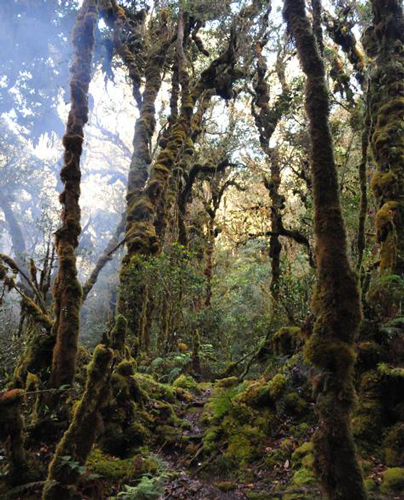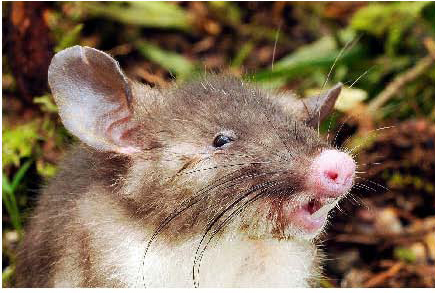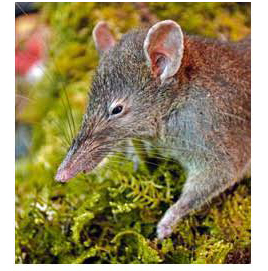The Magical Rodent Infested Forests of Sulawesi – Hyorhinomys stuempkei
The small island of Sulawesi can be found in the central part of the range of islands that form Indonesia. The fauna of this heavily forested island has fascinated scientists for a very long time. It is located approximately half-way from Australia and Papua New Guinea to the east and Malaysia/south-east Asia to the west.
An Ancient Ecosystem
The Philippines lie to the north. Researchers have studied the Sulawesi ecosystem in order to gain an understanding of how organisms have migrated across land bridges that once existed in the past. Think of Sulawesi and this part of the world as a crossroads, where the fauna of Australasia and the rest of Asia mixes.
The Magnificent and Remote Mountainous Forests of Sulawesi

A magical place with a unique fauna. The remote forests of Sulawesi.
Picturecredit: Dr Kevin Rowe/Museum Victoria
Alfred Russel Wallace
The great scientist and naturalist Alfred Russel Wallace, who co-authored the 1858 paper on the theory of evolution by natural selection with Charles Darwin, spent many years exploring the jungles and forests. It was because of his travels in this part of the world that he formulated many of his ideas on the natural world. Wallace’s in-depth exploration of the Indonesian islands allowed him to develop a theory related to the geographical spread of organisms. He noted that the world’s animals could be divided up into zoogeographical regions, the Mammalian fauna of Indonesia illustrate this idea nicely.
Sulawesi
Sulawesi lines to the east of an imaginary line drawn through the archipelago (the Wallace Line). Many Asian animal types have their eastern most distribution on Sulawesi and conversely many Australian lineages have their most westerly distribution on Sulawesi. This has led to evolution of a very unique fauna on the island, most of the human inhabitants (about twenty million) live on the coast, some parts of the island remain relatively unexplored. The island is also very big, it is the eleventh largest island in the world, and its landmass is roughly equivalent to the size of England, Wales and Northern Island combined.
The Approximate Position of the Wallace Line

Marking the barrier between Asian and Australasian faunas.
Picture credit: Google Maps/Everything Dinosaur
Trapping and Studying Rodents
Over the last few years, scientists from Museum Victoria, in collaboration with Indonesian colleagues and researchers from the United States have been trapping rodents in the forests found in the more mountainous and difficult to access parts of the island. They have recorded a unique and very varied rodent assemblage, including the latest addition, the newly discovered Hyorhinomys stuempkei (hog-nosed rat).
This rat with its proportionately large ears, flat claws and bizarre hog-like nose is so genetically different from other species that it has been assigned its own genus. A paper on the research team’s study will be published this month in the “Journal of Mammalogy”.
Hyorhinomys stuempkei (hog-nosed rat) of Sulawesi

The Hog-nosed rat – Hyorhinomys stuempkei.
Picture credit: Jacob Esselstyn/Louisiana State University
Hyorhinomys stuempkei
H. stuempkei is not the first new rodent species to be discovered by Dr Kevin Rowe (Museum Victoria) and his colleagues. Sulawesi seems to be home to a whole host of unique rodents. For example, Dr Rowe was involved in the discovery and description of a very curious rat – Paucidentomys vermidax, a rodent like no other known to science. It is almost toothless and unable to gnaw or chew. It hunts worms and other soft-bodied creatures on the forest floor. It’s discovery provided evidence to scientists that, under certain conditions, even highly successful traits such as gnawing teeth, a defining characteristic of the Rodent Order, can be lost.
The Almost Tooth-less, Worm Eating Paucidentomys vermidax

Paucidentomys vermidax – a bizarre newly discovered rodent from Sulawesi.
Picture credit: Museum Victoria
The Hog-nosed Rat (Hyorhinomys stuempkei)
In the case of the hog-nosed rat Hyorhinomys stuempkei, the striking feature of this rodent is its large, pink and very flat nose with forward facing nostrils. It also lacks a coronoid process on the lower jaw, an attachment site for muscles involved in chewing that is present in almost all other mammals including our own species.
Hyorhinomys stuempkei is very probably entirely carnivorous feeding on invertebrates, possibly bounding or hopping after its prey as its back legs are unusually long. It has a disproportionately small mouth, but long incisors, which are bright white (strange for a rat as the incisors are usually orange coloured in most other rodents). Take note of this, could companies with an interest in selling tooth-whitening products be making a bee-line for the remote forests of Indonesia?
Commenting on the Discovery
Commenting on the new rodent discovery, Dr Rowe stated:
“The Hog-nosed Rat is exciting for us because it extends the diversity of an already amazing group of rodents that are only found on the island of Sulawesi. Even though there are only eight species in this endemic group, they exhibit a huge eco-morphological range including small grey rats, a nearly toothless vermivore, an amphibious rat, and now a long-limbed, hog-nosed rat. There are millions of species on this Earth that are yet to be discovered and described, but I am still amazed that we can walk into a forest and a find a new species of mammal that is so obviously different from any species, or even genus, that has ever been documented by science.”
It’s worth noting that almost all of the mammals native to Sulawesi are endemic to this island and the genus name Hyorhinomys translates from the Greek as hog (hyo), nose (rhino) and rat (mys).
The Research Team
Discovered by an international team comprising Dr Kevin Rowe (Museum Victoria); Heru Handika (Museum Victoria); Anang Achmadi (Museum Zoologicum Bogoriense); and Dr Jacob Esselstyn (Louisiana State University Museum of Natural Science) this new discovery is the third new genus described by this international collaboration since 2012.
Visit Everything Dinosaur’s award-winning website: Visit Everything Dinosaur.





